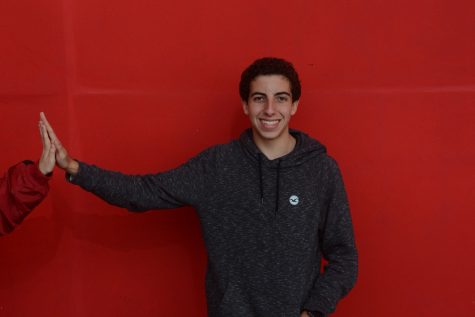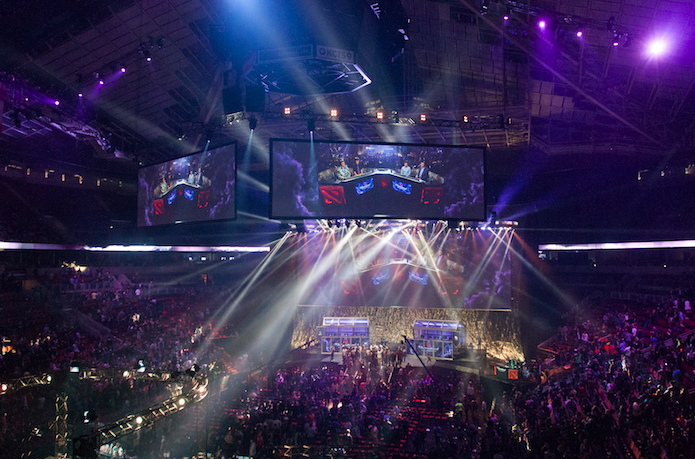A Guide to the eSports Phenomenon
Since the dawn of time, humans have fought against each other for glory: Sumerian wrestlers in 3000 BCE, ancient Egyptians in long jump and rowing competitions, the Ancient Greeks in the Olympic games dating as far back as 776 BCE. Sports followed in society’s footsteps, becoming more civilized with each passing year. So civilised, in fact, that they have moved into our very computers. In 2014, global revenue for games was 20 billion dollars higher than that of the music industry, and the gaming industry is now turning its focus to professional competitions, commonly known as eSports.
Unfortunately, it can be difficult to understand the eSports phenomenon by tackling the movement on your own; there are so many different games, leagues, teams and sponsors. So, without further ado, here is a short Talon guide to the professional gaming world:
Before addressing the economics and specifics of the world of eSports, it is important to define what games usually stand above the rest in professional tournaments. The top 3 professionally played games are considered to be League of Legends (LoL), Counter Strike: Global Offensive (CS:GO) and Death of the Ancients 2 (DOTA 2).
As is true for any sport, high-profile professional gamers are endorsed and sponsored by large companies. Sponsorships from companies such as Coca-Cola, American Express, Samsung, Nissan, Red Bull, Intel, Razer, Nvidia, HTC and SanDisk, among others, have made eSports economic rivals of major sports. The industry value itself is expected to reach 2 billion Dollars by 2018. In 2014, Amazon purchased Twitch, the most popular video streaming service for gamers, for almost 1 billion Dollars in cash. Ivy League universities have set up intercollegiate gaming leagues and other universities, from Chicago to California, have begun to dole out athletic scholarships to gamers.
Professional gamers are often associated with larger teams. The largest teams are considered to be OpTic Gaming, Evil Geniuses, Team SoloMid, Cloud9, Fnatic, Mineski, Counter Logic Gaming, SK Telecom T1, Splyce, Team EnVyUs and Natus Vincere. Many of these teams also pay their players a separate team salary in addition to prize money from tournament wins. Sponsorships from companies, such as Logitech and Razer, may cover gaming hardware expenses and travel costs. In return, teams feature their sponsors on their jerseys and social media accounts.
Professional tournaments have become increasingly larger areas of investment. One of the most lucrative tournaments to date was 2016’s The International DOTA 2 tournament, organized by the Valve Corporation. It was hosted in the KeyArena in Seattle, Washington, a stadium with a seating capacity of over 17,000. The total prize pool was $20,770,640. About 44% of the prize pool, or $9,139,002, went to the winning team, Wings Gaming. In comparison, the prize pools for the Masters Golf Tournament and the Tour de France are $10 million and $2.5 million respectively.
When it comes to eSports viewership, the numbers are staggering. In 2016, Game 7 of the N.B.A. finals drew nearly 31 million viewers, the largest total number for any N.B.A. finals game in almost 20 years. The 2016 Academy Awards also drew 34.4 million viewers. In comparison, the League of Legends 2016 World Championship finals, between the teams SK Telecom T1 and Samsung Galaxy, reached 43 million unique viewers. South Korea even has a television channel solely dedicated to eSports content.
The relationships between eSports professionals and their fans is also much more personal compared to traditional athletics. Professional gamers often practice on streaming platforms, such as Twitch. This means that their fans can watch behind-the-scenes practice sessions and even play a round or two with the pros. It’s the equivalent of having Stephen Curry or Cristiano Ronaldo wear a camera and an earbud to every practice, so fans can watch them playing and even directly ask the players questions.
It is a mistake to say that eSports are only just developing, for this revolution began years ago. The movement is constantly growing in an unpredictably exponential fashion. Sponsorships and tournament prize pools will continue to grow in parallel to audience sizes. ESPN is already broadcasting certain eSports events, a trend which will bring professional video games to every living room. One of these days, you might walk down a Graded hallway and see a Cloud9 or Natus Vincere jersey mixed into the plethora of soccer ones. The technological revolution has undeniably reached a competition that dates back to the dawn of time. The only question remaining is how much larger it will grow.

Ever since he first “read” a book by himself (or at least phonetically memorized the contents after having it read aloud repeatedly), Alexandre has...










Fallen • Apr 8, 2017 at 8:23 pm
Run SKG!